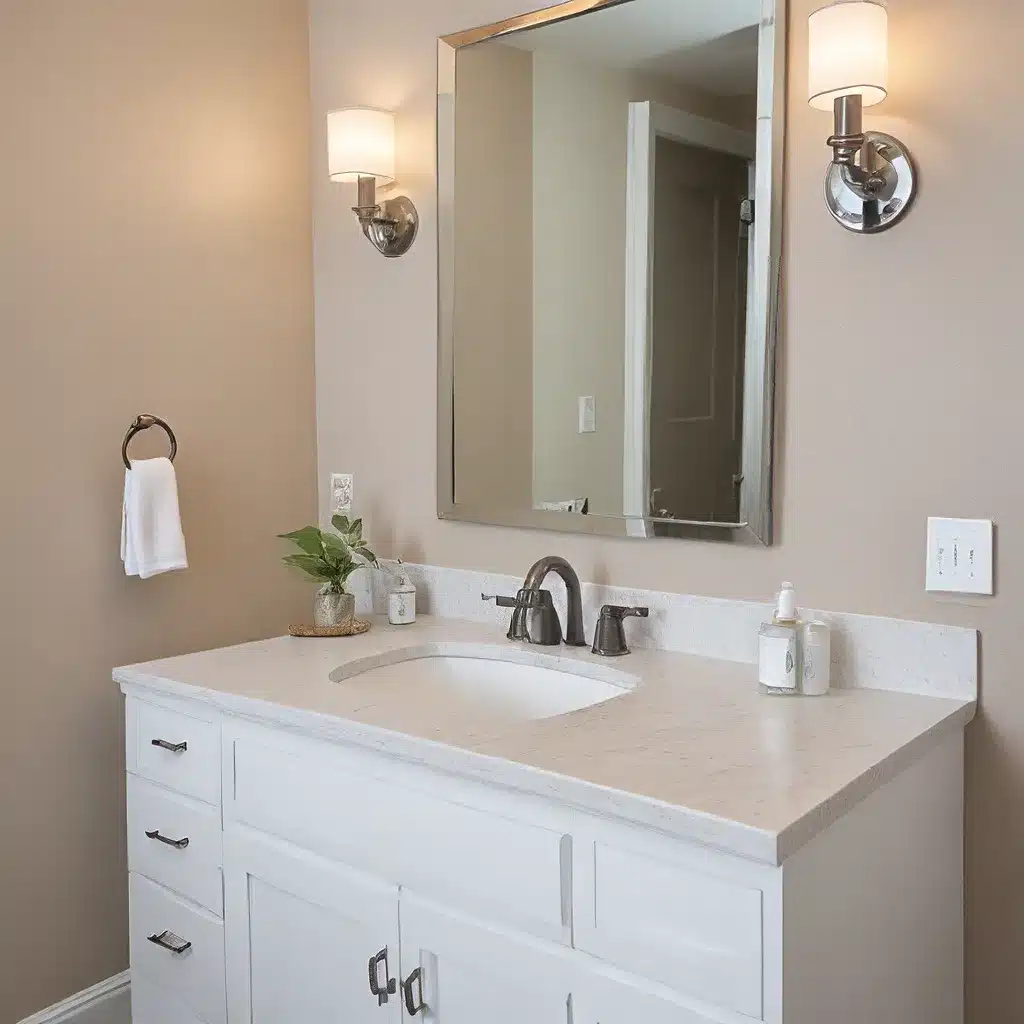
Understanding Washbasin Designs and Materials
When it comes to bathroom fixtures, the washbasin is often the centerpiece, setting the tone for the overall aesthetic and functionality of the space. Whether you’re renovating an existing bathroom or building a new one, choosing the right washbasin design and material can make a significant difference in the final outcome.
One of the most popular and versatile washbasin options is the undermount style. These basins are installed beneath the countertop, creating a seamless, built-in look that’s easy to clean and maintain. Undermount washbasins come in a variety of materials, including porcelain, ceramic, and stainless steel. Each material has its own unique advantages, such as durability, ease of cleaning, and visual appeal.
For a more traditional or farmhouse-inspired look, drop-in washbasins offer a classic appeal. These basins sit on top of the countertop and are often made of porcelain or enameled cast iron. While they may require a bit more cleaning around the edges, drop-in basins can be a stunning focal point in a bathroom design.
Another popular option is the vessel washbasin, which sits on top of the countertop like a decorative bowl. These basins come in a wide range of materials, including glass, stone, and metal, and can add a modern, spa-like feel to the bathroom. However, vessel basins may require additional countertop space and can be more challenging to clean around.
When it comes to installation, the type of washbasin you choose will largely dictate the process. Undermount basins, for example, require a specialized countertop and a careful installation process to ensure a seamless, water-tight fit. Drop-in basins, on the other hand, are typically easier to install, as they simply need to be set into a pre-cut opening in the countertop.
Choosing the Right Washbasin Size and Configuration
The size and configuration of your washbasin can also have a significant impact on the overall functionality and aesthetic of your bathroom. When selecting a washbasin, consider factors such as the available countertop space, the number of users, and the desired level of accessibility.
For smaller bathrooms or powder rooms, a single-basin configuration may be the most practical choice, as it conserves space and can still provide ample room for handwashing and grooming. Double-basin washbasins, on the other hand, are ideal for larger bathrooms or those with multiple users, as they offer separate sinks and additional counter space.
In addition to the number of basins, you’ll also need to consider the size of the washbasin. Larger basins can be more accommodating for tasks like shaving or hair styling, while smaller basins may be better suited for powder rooms or tight spaces. When measuring for a new washbasin, be sure to carefully assess the available space and allow for any necessary clearances around the fixture.
Navigating the Plumbing and Installation Process
Proper installation is crucial for the long-term performance and durability of your washbasin. Whether you’re working with a new construction project or a bathroom renovation, the plumbing and installation process can be complex and requires attention to detail.
One of the most important considerations is the drain location. Undermount and vessel basins, in particular, may require specialized drain configurations to ensure a seamless, leak-free installation. It’s generally recommended to work with a licensed plumber or contractor who is experienced in bathroom fixture installation to ensure the process is done correctly.
In addition to the plumbing, the countertop material and cabinetry will also play a role in the overall installation process. Solid surface materials, such as quartz or granite, may require specialized cutting and fitting to accommodate the washbasin. Similarly, the cabinet configuration and access points can impact the ease of installation and future maintenance.
Maintaining and Caring for Your Washbasin
Once your washbasin is installed, it’s important to establish a routine maintenance plan to keep it looking its best and functioning properly. Depending on the material, this may involve regular cleaning, sealing, or polishing to prevent stains, scratches, or mineral buildup.
For porcelain and ceramic washbasins, a mild, non-abrasive cleaner and a soft cloth or sponge can be used to wipe down the surface. Stainless steel basins may require a bit more attention, with specialized cleaners and regular drying to prevent water spots or corrosion.
In addition to keeping the basin itself clean, it’s also important to maintain the drain and overflow features. Regularly checking for and removing any debris or buildup can help prevent clogs and ensure the proper functioning of the washbasin.
By understanding the various design options, installation requirements, and maintenance needs of washbasins, you can make an informed decision that not only enhances the aesthetic of your bathroom but also provides long-lasting value and functionality. Whether you’re a homeowner, interior designer, or contractor, the Washbasin Factory is here to provide the expertise and resources you need to navigate the world of bathroom fixtures with confidence.